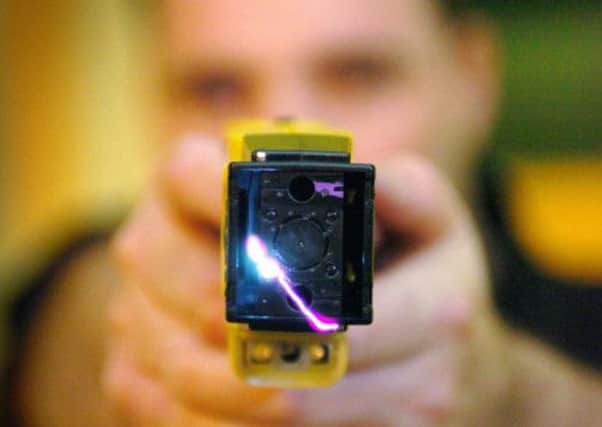Taser use on 15yo Scots school pupil ‘justified’


Police in Stirling tasered the teenager and fired an “impact round” at him, after he took a knife to Bannockbun Primary School and threatened to kill himself, on May 4.
It is the only time police have used a taser on a child under 16 in the last three years.
Advertisement
Hide AdAdvertisement
Hide AdThe report released today from the Police Investigations & Review Commissioner found that officers were “justified” in using the two weapons on the boy.
Locals said the youth had been with a group of pals when he suddenly ran into his home and grabbed a knife, just after 9pm.
He then fled into the grounds of the school saying he was going to use the knife on himself.
The review found the boy presented the knife at officers, threatening to stab them and to kill himself and he began to self-harm, inflicting cuts to his hands and arms.
Armed police officers attended the incident armed with tasers and baton rounds and contained the boy until the arrival of police negotiators.
Over a period of two hours police attempted to resolve the incident and persuade the boy to disarm.
However he became increasingly agitated and continued to self-harm.
When he threatened to commit suicide by stabbing himself in the chest and then appeared to be attempting to attack an officer, police fired a baton round and then a taser at him. This allowed the police to disarm the boy and take him into custody.
Advertisement
Hide AdAdvertisement
Hide AdThe boy was taken to hospital where he was treated for his self-inflicted injuries.
He suffered no after-effects of the use of taser or the baton round other than minor bruising. He was later charged with a public order offence and possession of a knife and placed into the care of Social Work Services.
Professor John McNeill, the Police Investigations & Review Commissioner said: “In this case the use of the baton round and taser allowed police to control the boy, disarm him and ensured that he did not seriously injure either himself or the officers.
“In the circumstances there was no less forceful method to resolve this incident safely.”
In Scotland it is normal practice following the discharge of any police firearm for the police to refer the matter to the PIRC for independent investigation.
In this case PIRC investigators visited the scene, interviewed the boy, his mother, social work staff, and witnesses to the incident. Their investigation also included reviewing statements from police officers, viewing CCTV footage of the incident and listening to audio recordings.
Tasers use electrical current to disrupt voluntary control of muscles causing neuromuscular incapacitation.
Someone struck by a Taser experiences stimulation of his or her sensory nerves and motor nerves, resulting in strong involuntary muscle contractions.